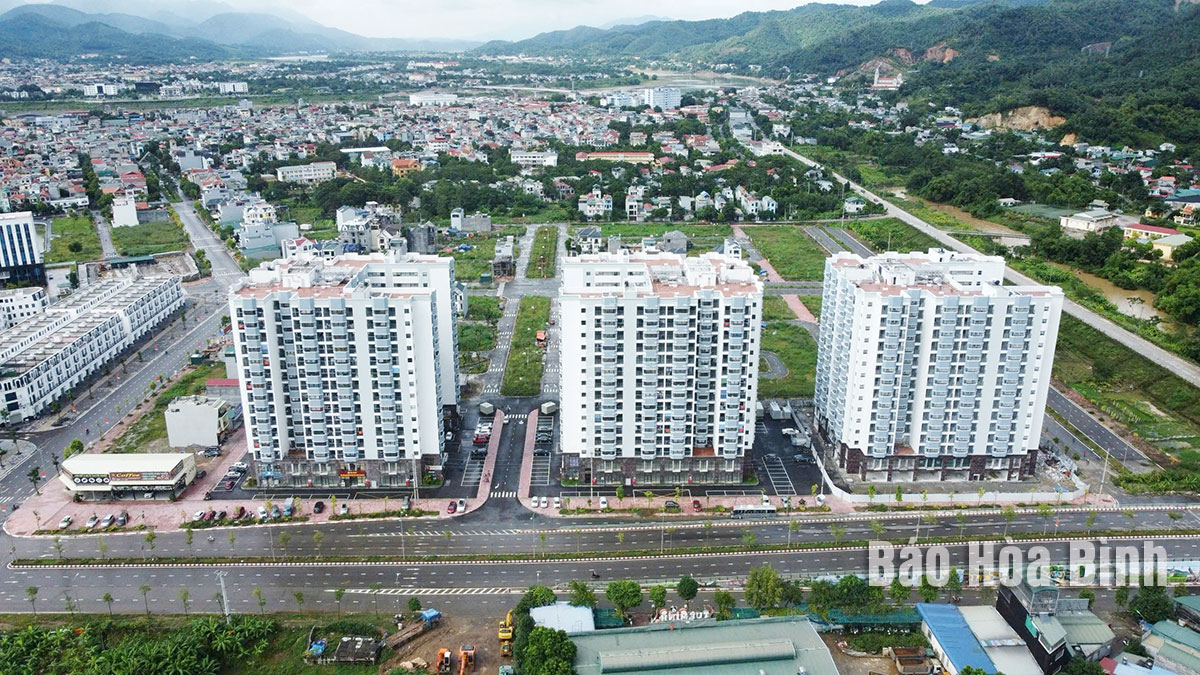
Hoa Binh city is gathering feedback from ministries and sectors regarding its proposal for tier-2 urban status. After years of development from its tier-3 foundation, the city is awaiting inclusion in the country’s list of more than 30 tier-2 urban centres.
A corner of Hoa Binh city.
For Le Minh Long, a native in Tan Thinh ward who now lives in Hai Phong city,
the transformation of his homeland is striking with high-rise building,
shopping zones, an array of services, and bustling streets.
Prior to 2010, entertainment options for young people were limited to a handful
of small coffee and fashion shops and eateries. Nowadays, shopping centres
offer everything from retail therapy to cinema experience, helping younger
generations embrace a contemporary and dynamic lifestyle.
Over the recent past,
multiple infrastructure improvement projects have been carried out, including
the upgrade of key streets like Cu Chinh Lan, An Duong Vuong, Ba Trieu, Vo Thi
Sau, Ly Nam De, and Phan Boi Chau. These projects cover sidewalk renovation,
lighting system supplement, and drainage system construction.
Besides, the city has accelerated the site clearance work for the construction
of key projects, helping create a facelift to the locality.
The economic indicators also support the city’s ambition. Over the past three
years, Hoa Binh city has maintained an average economic growth rate of 11.93%
while per capita income is 1.51 times higher than the national level. Besides,
non-agricultural employment has reached 82.2% while the poverty rate has
dropped significantly to 1.38%. According to the Ministry of Construction’s
assessment board, the metrics align with the tier-2 urban standards.
Achieving the tier-2
status, Chairman of the city People’s Committee Pham Anh Quy said, will not
only be a milestone but also a starting point for the city to continue
consolidating and improving its achieved criteria, with the ultimate goal of
improving the living quality of the local residents.
The city, boasting rich cultural, historical and ethnic traits of the
northwestern region, will keep on making breakthroughs and positioning itself
as a political, administrative, economic, cultural, social and
scientific-technical centre of Hoa Binh province.
Hoa Binh province is undergoing a dynamic transformation amid Vietnam’s national digital transition. Building on Poliburo’s Resolution No. 57-NQ/TW on breakthroughs in science, technology, innovation, and national digital transformation, the province has rolled out a wide range of practical action plans. A standout initiative is the "Digital Literacy for All” movement, an effort to ensure that no one is left behind in the digital era.
Hoa Binh province is undergoing a dynamic transformation in the wake of the national digital transformation movement. Building on Resolution No. 57-NQ/TW of the Politburo on breakthroughs in science, technology, innovation, and national digital transformation, the province has implemented a wide range of practical action plans. A standout initiative is the "Digital Literacy for All” movement ambitious effort to ensure that no one is left behind in the digital age.
With a spirit of unity and proactive problem-solving, the Party Committee, the government and the people of Dong Lai Commune (Tan Lac District) have made great strides in implementing the resolutions of the 24th Party Congress of the commune for the 2020 - 2025 term. Focusing on leadership and practical actions, the commune has brought the Party’s resolutions into daily life, creating strong impacts and pushing the local development forward.
Amid the nationwide push for digital transformation, young people in Hoa Binh Province are stepping up as dynamic pioneers, applying technology to enhance Youth Union operations and expand the reach of youth-led initiatives. Through creativity and adaptability, Youth Union organizations at all levels have introduced a series of practical solutions, contributing to modern governance and community development.
In recent years, An Nghia commune, located in Lac Son district, has stepped up administrative reform, focusing on improving the quality and efficiency of its single-window service unit for receiving and processing administrative procedures. These improvements have helped create favourable conditions for local residents and organisations to handle administrative procedures, contributing to the commune’s broader socio-economic development.
The Prime Minister-approved master plan to develop the multi-use value of forests ecosystems through 2030, with a vision to 2050, aims to improve the management and sustainable use of forest resources, create jobs, increase incomes, and improve the living standards of ethnic minorities, people in mountainous and remote areas, forest workers and those living near forests.



